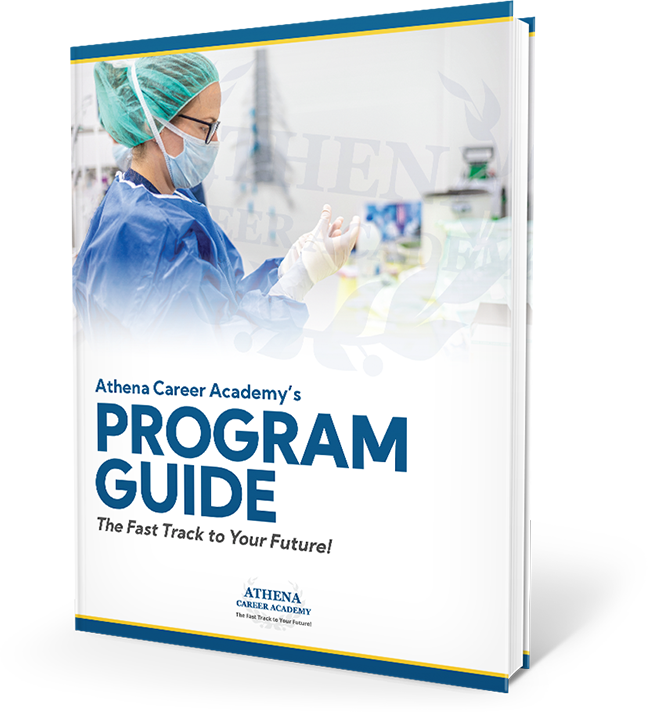Your Guide to Starting a Medical Assistant Career
Posted On Nov 8, 2023
If you are feeling stuck in a dead end career or minimum wage job and are looking to make a change, going back to school to become a medical assistant is a great idea. Becoming a medical assistant is a stable, in-demand, and satisfying career on its own, but it can also open up various opportunities for other careers in the healthcare industry. When you begin a medical assistant training program, you are on a path to a stable and fulfilling career in the growing healthcare field.

Step 1: Do Your Research
Making a career change is a big step. Before you commit to becoming a medical assistant, it’s essential to understand exactly what the career entails to make sure it’s a good fit for you. Medical assistants perform both administrative and clinical tasks in healthcare settings, such as clinics, hospitals, and doctors’ offices. They work closely with other healthcare professionals to provide patient care. Medical assistants usually spend a lot of their time interacting with patients, making it a great career for those with strong interpersonal skills who like to be around people and help them.
Step 2: Check Out the Education Requirements
Does the medical assistant training program you are looking at fit your current lifestyle? Medical assistant programs vary in length and requirements. Typically, you can choose between diploma, certificate, or associate degree programs. Certificate and diploma programs usually take 9-12 months to complete, while an associate degree program may take two years. Many adults who are already working or caring for a family look for programs with flexible schedules they can balance with their other responsibilities, while others may want to complete the requirements as quickly as possible.
Step 3: Find an Accredited Program
Not every medical assisting program is the same, and not every medical assisting program is ready to give you the best start in your career. Look for an accredited program. Having accreditation ensures that the program meets specific standards and will provide you with a quality education. Accreditation is often granted by organizations like the Commission on Accreditation of Allied Health Education Programs (CAAHEP) or the Accrediting Bureau of Health Education Schools (ABHES). When you are comparing medical assisting programs, look for their accreditation credentials. To take the test and become a certified medical assistant, you will need to be backed by an accredited education.
Step 4: See if You Meet the Admission Requirements
Getting started as a medical assistant doesn’t require much, but will have some admissions requirements to meet. Each program may have its own checklist, which usually includes a high school diploma or GED, any standardized test scores, and other prerequisites, such as certain fundamental classes. Be sure to check the specific requirements for the program you’re interested in and take the time to fulfill the requirements before applying.
Step 5: Check on Financial Aid
Although medical assistant training programs are usually very affordable, today’s economy can make even an affordable program feel like a pinch. To help, explore financial aid options such as scholarships, grants, and student loans to help cover the cost of your education. The Free Application for Federal Student Aid (FAFSA) is a useful tool for determining your eligibility for federal financial aid. When you choose a medical assistant training school, they are often able to help you find the right financing options to complete your program.
Step 6: Start Attending Classes
Once you’ve been accepted into a medical assisting program, you’ll begin attending classes and completing your coursework. A good medical assistant training program will typically cover medical terminology, anatomy, physiology, clinical and administrative procedures, and practical skills. Your classes can be tailored to fit your schedule, with evening and weekend options.
Step 7: Gain Clinical Experience
Many medical assistants feel the most valuable part of their training came from clinical experience. Classroom learning gives you all the information, but in the healthcare industry, learning on the job is what sets a good medical assistant apart. Most quality medical assistant training programs have a clinical experience or externship component, which gives you the opportunity to work in a healthcare setting under the supervision of experienced professionals. This is valuable hands-on experience that will be a great help when you are ready to start your career.
Step 8: Get Certified
You want to make yourself marketable as a medical assistant to land a job that’s right for you. While not always required, obtaining certification as a Certified Medical Assistant (CMA) can enhance your job prospects and earning potential. To become certified, you’ll need to pass an exam administered by a certifying organization like the American Association of Medical Assistants (AAMA). Your medical assistant training program can not only help you learn how to become certified, but can help you prepare for the exam.
Step 9: Start Networking to Help with Your Job Search
Beginning a new career, even when you’ve gone through an excellent training program like the one offered by Athena Career Academy, can be intimidating. This is why choosing a training program with a strong job placement assistant program is so vital. Use the connections you’ve made during your training to start networking within the healthcare industry and explore potential job opportunities. Medical assistants can work in various settings, so consider where you’d like to work, whether it’s a physician’s office, hospital, or specialty clinic, and focus your networking on that type of setting. The best way to find a job you want is by connecting with others in the field, and a quality medical assistant training program can help with that.
Step 10: Stay Informed and Up to Date
The medical field is always evolving, and most quality medical assistant training programs will help ensure that you are informed and up to date with current best practices. Even after graduating and beginning their careers, medical assistants have to stay up to date with changes in healthcare regulations and best practices. Consider joining professional associations and attending continuing education courses to enhance your skills.
When you are ready to make a change, you can become a medical assistant in under a year while enjoying the flexibility to continue to work or take care of your family. After becoming a medical assistant, you will know that you have a secure, in-demand career with great opportunity to grow and advance in the field. To learn more about how we can help you reach your career goals, contact Athena Career Academy today!
Recent Posts
- How Accessibility to Faculty Enhances ECE Degree Program
- Early Childhood Education Courses Lead to Great Teaching Careers
- Insights for Effective Preschool Teaching
- Online vs. In-Person Medical Assistant Training: Which Is Right for You?
- Preschool Teachers Provide Hands-On Learning for Future Innovators
Categories
- Flexible Class Schedule
- Early Childhood Education
- Clinical Medical Assistant
- Medical Assistant
- Accredited
- Medical Assistant Program Toledo, OH.
- MA Program
- ECE
- preschool teacher
- CMA
- Administrative Medical Assistant
- Practical Nursing
- Nursing School
- Nursing
- Early Childhood Education Degree
- LPN to RN
- Certified Medical Assistant
- Early Childhood Educator
- Become a Teacher
- Nursing Career
- RN
- Childcare Teacher
- Nursing School Toledo
- Practical Nurses
- Childcare Director
- Nursing Education
- Registered Nurse
- LPN
- Toledo Ohio Nursing School
- Teaching Degree
- Become a Nurse in 12 Months
- Nursing Career Opportunities
- Nursing School Preparation
- Practical Nursing Jobs
- Medical Coding and Billing
- DayCare Teacher
- Nursing Salaries
- Nursing School Costs
- PN to RN
- Career Training
- Nursing School Tuition
- Nursing School Financial Aid
- Phlebotomist Technician
- Practical Nurse Salaries
- EKG Technician
- nurse burnout
- #nursesunite
- Insider
- Phlebotomy Technician Salary
- Uncategorized
- resume
Contact us
For News, Resources, and Conversations:
Get your FREE 2022 Athena Career Academy Program Guide
The best way to get to know Athena Career Academy is to see what we offer. Download our program guide to learn more. Take the fast track to your future today!
An exciting career can be yours in just one year!
Discover how Athena Career Academy can help you reach your medical career goals fast.
Accrediting Agencies
Athena Career Academy is accredited by the Commission of the Council on Occupational Education. The school is registered with the Ohio Board of Career Colleges and Schools; State of Ohio – School Registration Number – 10-09-1943T and operates under the authority of the Ohio Board of Nursing. Please contact the Student Operations Manager for more information.



